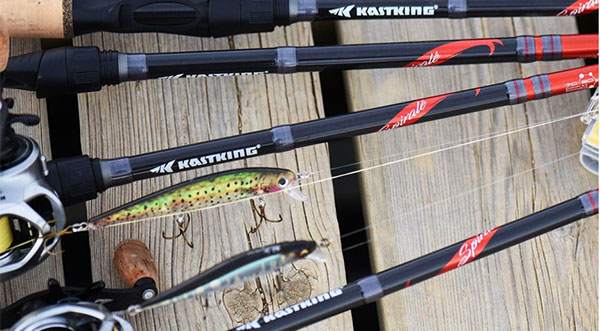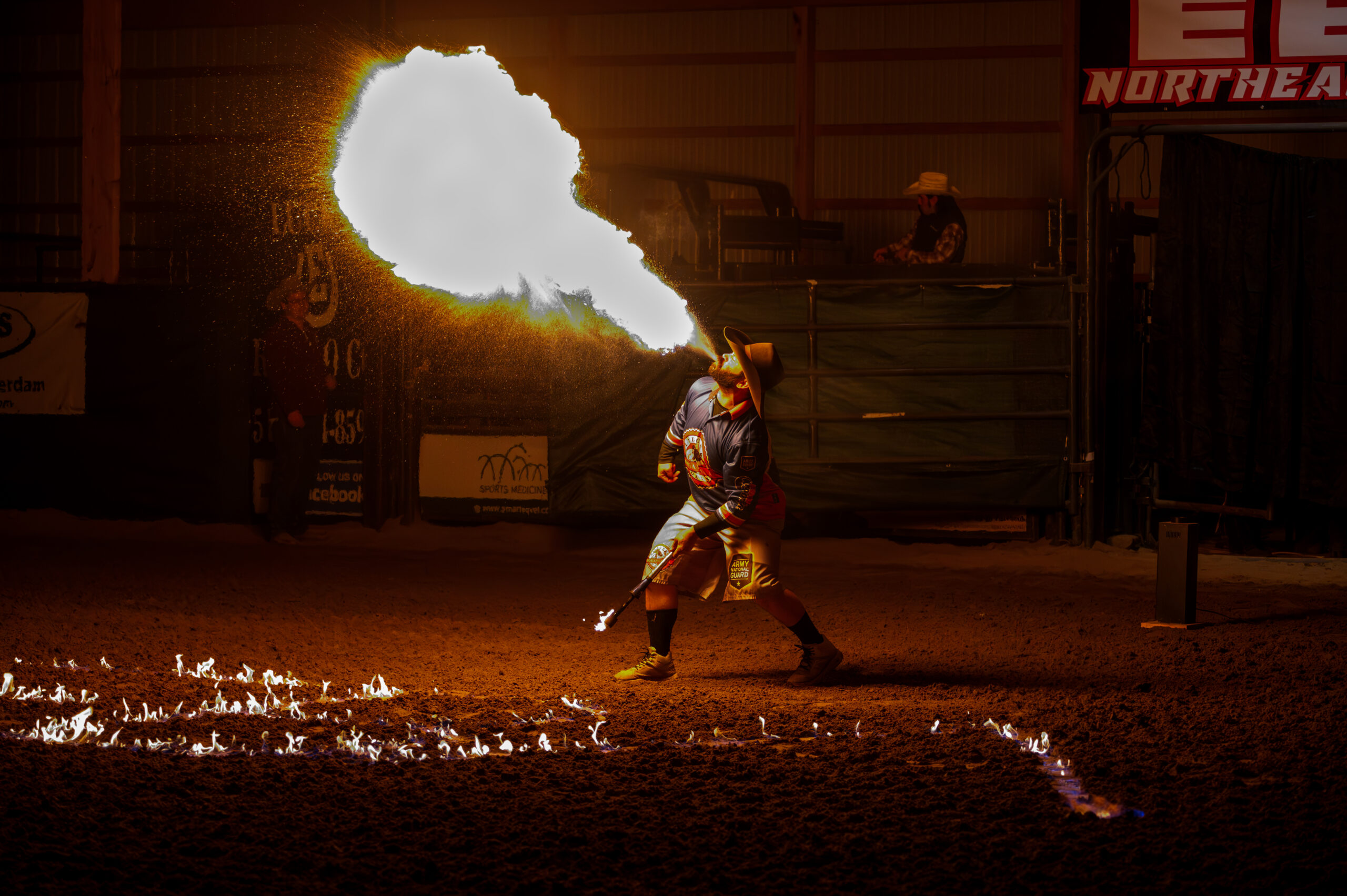How to Properly Use Bait Casting Rods
By Space Coast Daily // December 23, 2023

Bait casting rods are not only an integral part of fishing equipment, they play a central role in enhancing fishing results. Designed for precision and long range casting, this type of rod allows the angler to accurately place the bait in the target area.
The guides provided in this article are designed to cover everything from choosing the right baitcasting rod, line and bait, to mastering proper casting techniques and fish-fighting strategies.
What is a Bait Casting Rod?
A bait casting rod is a type of fishing rod specifically designed for casting bait. It emphasizes precise control, allowing you to accurately cast your bait to the desired location. Compared to regular fishing rods, bait casting rods are usually more robust and suitable for catching larger fish.
Choosing the Right Bait Casting Rod
Choosing the right bait casting rod is key to successful fishing. Different fishing environments and fish species require different types of bait casting rods. For example, if you plan to fish in freshwater lakes, a rod of medium length (such as 6.5 to 7.5 feet) and medium power might be the best choice. Such a rod is flexible enough to handle a variety of freshwater fish, like bass or trout.
In contrast, saltwater fishing, such as coastal or offshore fishing, typically requires stronger and longer rods to handle larger fish species, like mackerel or tuna. In this case, a rod of 7 to 9 feet with heavy power is more suitable, as it provides longer casting distances and stronger control.
Skill level is also an important factor in choosing a bait casting rod. Beginners should opt for rods that are easy to handle and well-balanced, which makes mastering basic skills easier. For instance, a rod of medium length and power, paired with an easy-to-operate reel, is ideal for beginners. This combination reduces the complexity of operation while providing enough flexibility to handle various fishing scenarios.
For experienced anglers, choosing more professional models is key to improving casting accuracy and distance. For example, a professional angler might choose a rod with ultra-fast action, combined with a high-performance reel, for precise long-distance casting. These advanced rods are usually lighter and stiffer, suitable for users with high skill levels.
Equipping Bait Casting Rods
Choosing the right line is crucial for a bait casting rod. For anglers looking to increase casting distance and precision, heavier monofilament or braided lines are recommended. For instance, monofilament lines are favored for their lesser stretch and lower flexibility, providing better control when fishing for larger fish. On the other hand, braided lines are known for their strength and abrasion resistance, suitable for fishing in environments with many obstacles, such as shallow areas or lakes with dense trees.
When selecting bait, considering the target fish species’ dietary preferences is crucial. For example, when fishing for bass, you might choose lifelike soft baits that mimic small fish or shrimp, while for catfish, larger chunks of natural bait, such as live or cut bait, might be used. The type and size of bait should be adjusted according to the target fish species’ habits and the current fishing environment.
The choice of sinkers, floats, and other accessories is also important. Sinkers help increase the sinking speed and casting distance of the bait, while floats are used to control the depth of the bait and provide a visual signal of a fish bite. For example, in flowing water, heavier sinkers might be needed to keep the bait stable, while in still water, different weights of floats may be needed to adapt to the depth.
When assembling a bait casting rod, ensuring that the line, rod, and reel match each other is essential. Correctly adjusting the reel’s drag force is crucial for preventing line tangles and improving casting efficiency. For instance, when using heavier bait, increasing the drag force can prevent line backlash. Conversely, using lighter bait, reducing the drag force helps for a smoother cast.
Casting Techniques
Basic techniques include the correct standing posture and arm movement. Stand firm, keeping your body balanced. Hold the rod handle with one hand and operate the reel with the other. Swing the rod backward forcefully and then cast forward swiftly. In different environments, such as changes in wind direction and water flow, adjust the casting angle and force. Advanced techniques also include learning to cast precisely around obstacles.
Control and Fighting Techniques
When large fish are hooked, controlling them with a bait casting rod is very important. Keep the rod bent to absorb the fish’s pull. Control and tire the fish by adjusting the reel’s drag force. It’s important to stay calm and adjust flexibly according to the fish’s movements. Learn to recognize the escape patterns of fish species to reduce the risk of line breaks and unhooking.
Maintenance and Care
Maintaining the cleanliness and good condition of your bait casting rod is very important. After each use, clean the rod and reel with fresh water to remove salt, mud, and other residues. Regularly check the line guides and rings to ensure there are no wear or damage. When storing, avoid direct sunlight and high temperatures, and choose a dry, ventilated place. Proper maintenance will extend the life of your bait casting rod.
Can You Install a Bait Casting Rod on a Spinning Rod?
It is not recommended to install a bait casting rod on a spinning rod. Bait casting rods and spinning rods have fundamental differences in design, especially in the installation and operation of the reel. Bait casting rods usually require a special bait casting reel, designed to provide more precise control and stronger drag force. Installing a bait casting reel on a spinning rod may lead to decreased performance or even damage the equipment.
What Type of Fishing Rod is Best Suited for a Bait Casting Rod
The best-suited for a bait casting rod is one that is specifically designed for it. These rods are usually shorter and more robust, facilitating precise casting control and handling the strong pull of large fish. The length, action (degree of bending), and power (range of weight it can handle) of a bait casting rod should be chosen based on your fishing environment and target fish species. Generally, freshwater and saltwater fishing have different requirements.
In freshwater environments, such as lakes, rivers, and streams, anglers usually face relatively smaller fish species like bass, trout, or carp. In such cases, a bait casting rod of medium length (usually between 6 to 7 feet) is ideal. This length of the rod not only makes it easier to operate in dense vegetation or limited spaces but is also flexible enough to handle a variety of fishing techniques and bait types. For freshwater fishing, rods with medium action (degree of bending) are usually chosen, providing good sensitivity while being strong enough to handle sudden pulls.
In contrast, saltwater environments, such as offshore, coastal, or large saltwater lakes, often involve larger fish species, like mackerel, tuna, or snapper. In these settings, longer (7 to 9 feet or longer) and more robust bait casting rods are more suitable. These rods not only provide longer casting distances, covering a broader area of water, but also have enough strength to handle the intense pull of large fish. In saltwater environments, rods with heavy power (able to handle a larger range of weight) and fast action are usually chosen to maintain control during the fight.
Conclusion
A bait casting rod is a powerful fishing tool that can bring more accuracy and effectiveness to anglers’ fishing experiences. Choosing the right bait casting rod, equipping it with suitable line and bait, and mastering the correct casting and control techniques are keys to successful fishing. At the same time, remember not to use a bait casting reel on a spinning rod, but choose a rod specifically designed for a bait casting rod. Finally, regularly maintain and care for your equipment to ensure optimal performance and a longer lifespan. This way, whether you are a beginner or an experienced angler, you can enjoy the pleasures of fishing.












